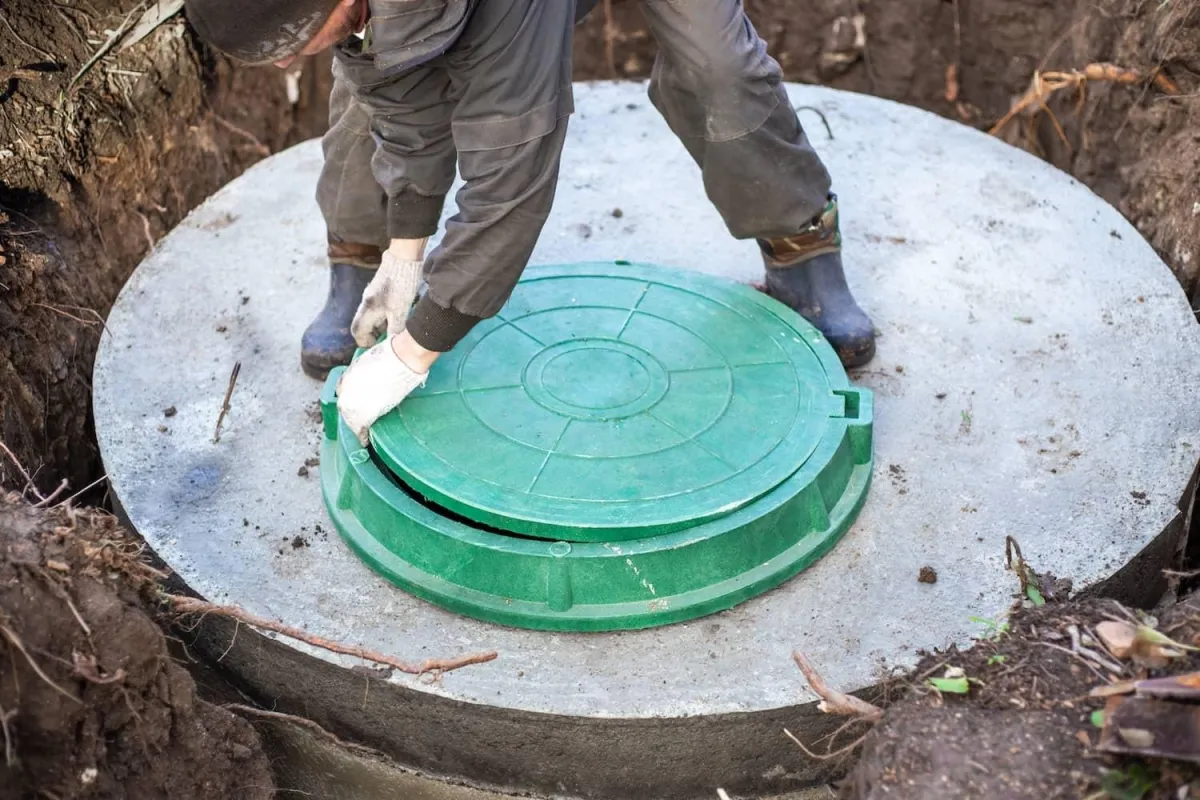Poop Breakdown in Septic Tanks: How Long Does It Take?

Hey friend! Have you ever wondered what happens after you flush? If you're like many homeowners with a septic system, you might be curious about how long does it take for poop to break down in a septic tank.
It's a common question that deserves a thorough answer, and we're here to help you understand this essential part of your home's system.
The Basic Breakdown Process
First, let's understand what breaks down poop in your septic tank. According to the Environmental Protection Agency, your septic tank is like a mini sewage treatment plant, filled with helpful bacteria that do the dirty work. Think of it as having millions of tiny helpers working 24/7 to keep your system running smoothly.
Here's what happens:
Solid waste enters the tank
Bacteria begin their work immediately
Most solids break down within 24-48 hours
Complete decomposition takes 2-4 days
Liquids separate and move to the drain field
Remaining solids settle as sludge
Sounds pretty important, right? Now, let's dive into the main question!
What Breaks Down Human Feces?
The real heroes of your septic system are:
Anaerobic bacteria (bacteria that don't need oxygen)
Enzymes produced by these bacteria
Natural biological processes
Beneficial microorganisms
Natural chemical reactions
According to Michigan State University Extension, these microscopic helpers work continuously to break down waste into simpler compounds that can be safely processed by your system.
The Science Behind the Process
Understanding what breaks down feces involves some basic science:
Bacteria produce special enzymes
These enzymes break complex materials into simpler ones
Different bacteria species handle different waste types
Temperature affects bacterial activity
pH levels influence breakdown speed
Oxygen levels impact bacterial performance
Factors That Affect Breakdown Time
The National Environmental Services Center identifies several factors that influence how quickly waste breaks down:
Temperature of the tank
Amount of bacteria present
Types of waste entering the system
Chemical usage in your home
Water usage patterns
Tank maintenance history
Season and weather conditions
Tank size and capacity
Household size and usage patterns
Optimal Conditions for Breakdown
To help what breaks down feces work more efficiently:
Keep tank temperature between 68-86°F
Avoid harsh chemicals
Maintain proper water levels
Schedule regular pumping
Use septic-safe toilet paper
Monitor household water usage
Choose bacteria-friendly cleaning products
Avoid antibacterial soaps
Warning Signs of Slow Breakdown
Watch for these red flags:
Strong odors
Slow drains
Gurgling pipes
Wet spots in yard
Backing up toilets
Green patches over septic field
Unusual sounds from plumbing
Slow toilet flushing
Multiple drain problems
The Timeline of Waste Breakdown
Here's what happens hour by hour:
0-24 Hours:
Initial bacterial activity begins
Solids start settling
Enzymes begin working
First stage of decomposition starts
Scum layer forms
24-48 Hours:
Most solid waste breaks down
Bacteria multiply rapidly
Decomposition accelerates
Clear zones develop
Liquid separation continues
48-72 Hours:
Further breakdown continues
Liquid separation occurs
Scum layer stabilizes
Bacterial activity peaks
Solids continue settling
72-96 Hours:
Final decomposition stage
Clear zones fully develop
Effluent ready for drainage
Stable layers establish
System reaches equilibrium
Maintaining Healthy Breakdown Rates
The CDC recommends these steps:
Schedule regular pumping
Avoid harmful chemicals
Conserve water usage
Use bacteria-friendly products
Monitor system performance
Keep records of maintenance
Educate household members
Protect drain field area
Impact of Household Products
Common items that affect breakdown speed:
Cleaning products
Medications
Personal care items
Laundry detergents
Dishwashing soaps
Water softeners
Food waste
Cooking oils
What Not to Flush
Protect your waste breakdown process by avoiding:
Antibacterial products
Bleach-based cleaners
"Flushable" wipes
Feminine products
Paper towels
Chemicals
Medications
Cooking oils
Cat litter
Coffee grounds
Dental floss
Disposable diapers
Enhancing Breakdown Speed
To optimize what breaks down poop:
Add septic-safe enzymes
Reduce water usage
Space out laundry loads
Fix leaky fixtures
Use less toilet paper
Install water-saving devices
Monitor cleaning product usage
Maintain proper tank levels
Professional Maintenance Schedule
According to Penn State Extension:
Inspect annually
Pump every 3-5 years
Test soil absorption every 5 years
Replace baffles as needed
Monitor drain field condition
Check for root intrusion
Verify tank structural integrity
Assess scum and sludge levels
Professional Maintenance Schedule
According to Penn State Extension:
Inspect annually
Pump every 3-5 years
Test soil absorption every 5 years
Replace baffles as needed
Monitor drain field condition
Check for root intrusion
Verify tank structural integrity
Assess scum and sludge levels
Emergency Warning Signs
Call a professional if you notice:
Complete system backup
Strong sewage odors
Multiple drain failures
Soggy drain field
Sudden gurgling sounds
Sewage surfacing
Multiple plumbing issues
System overflow
Long-term System Health
For optimal waste breakdown:
Keep detailed maintenance records
Monitor water usage patterns
Educate family members
Know warning signs
Have emergency contacts ready
Understand system layout
Protect drain field area
Plan for future maintenance
Climate Considerations
Your location affects breakdown speed:
Cold climates slow bacterial activity
Warm climates speed up processes
Seasonal changes impact performance
Rainfall affects system efficiency
Temperature fluctuations matter
Wrapping it up
Remember, understanding how long does it take for poop to break down in a septic tank is crucial for maintaining a healthy system. With proper care and attention to these guidelines, your septic system can efficiently process waste for many years to come!

© 2025 | All Rights Reserved | Privacy Policy
